UNIVERSE AWAITS
Blue-SKA thinking – construction begins on Square Kilometre Array
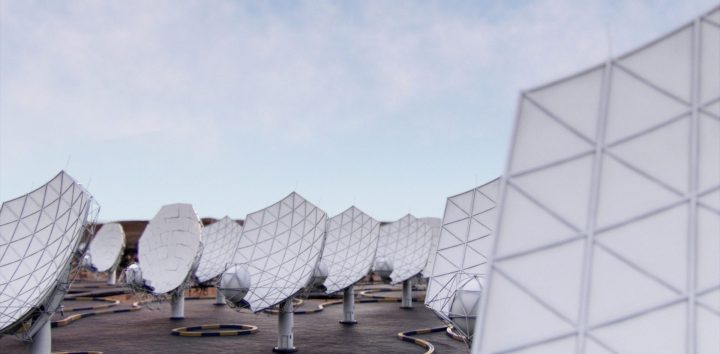
It’s been a long process, but construction on the world’s largest telescope has finally begun. Here’s a breakdown of the vision, the science and the obstacles.
It is ready, set, go for the Square Kilometre Array (SKA), the world’s largest telescope. Construction officially began today in South Africa and Australia and will continue until 2027.
This comes 10 years after both countries won the bid to co-host the telescope. Years ago, the experts knew what they wanted to build, but had to invent most of the technology to do it.
The construction will cost €1.3-billion and €700-million has been earmarked for operational costs over the next 10 years, which includes staff in South Africa, Australia and at the headquarters at Jodrell Bank near Manchester.
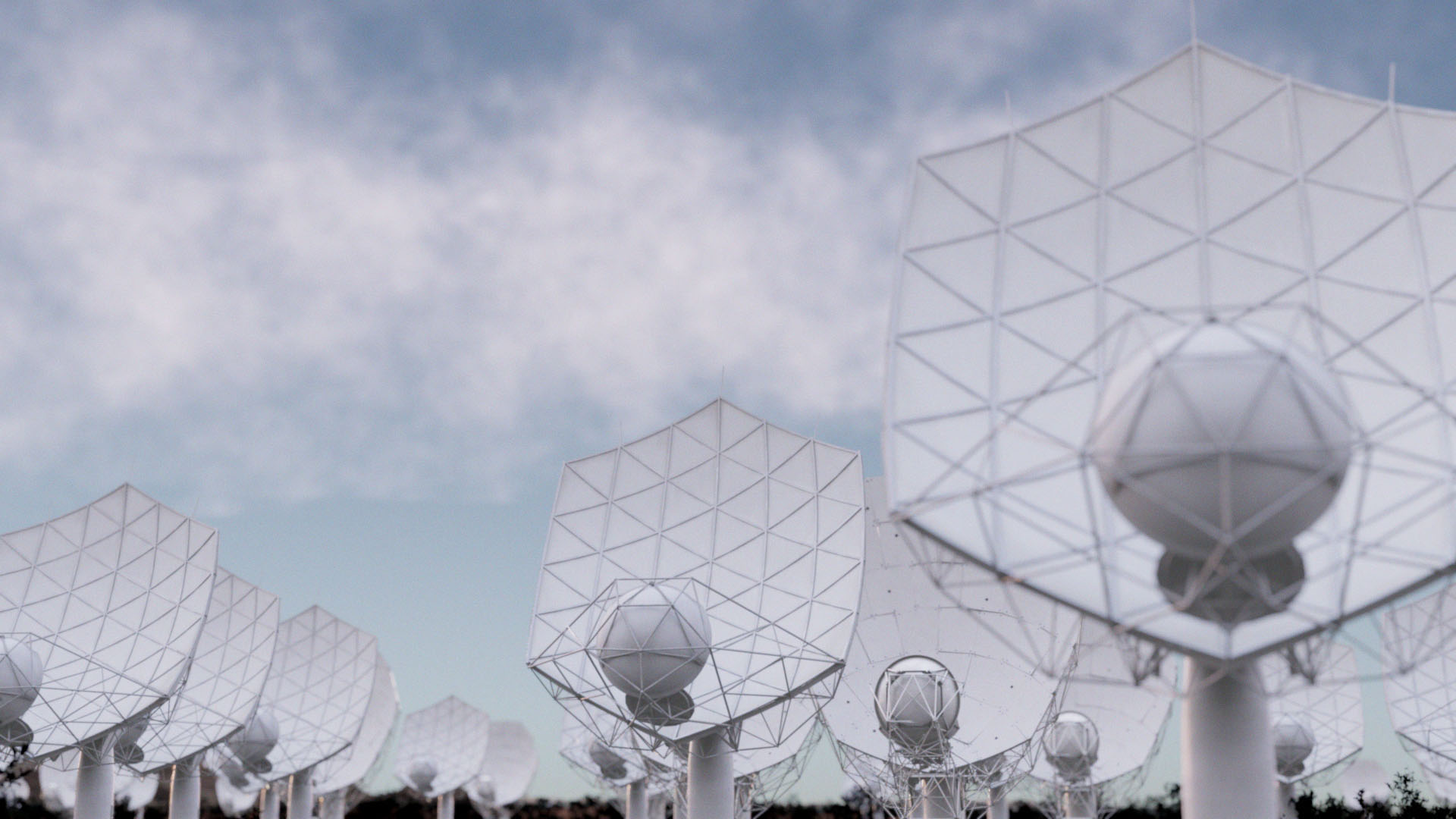
An animation of how the SKA-Mid would look when it is finished. (Animation: SKAO)
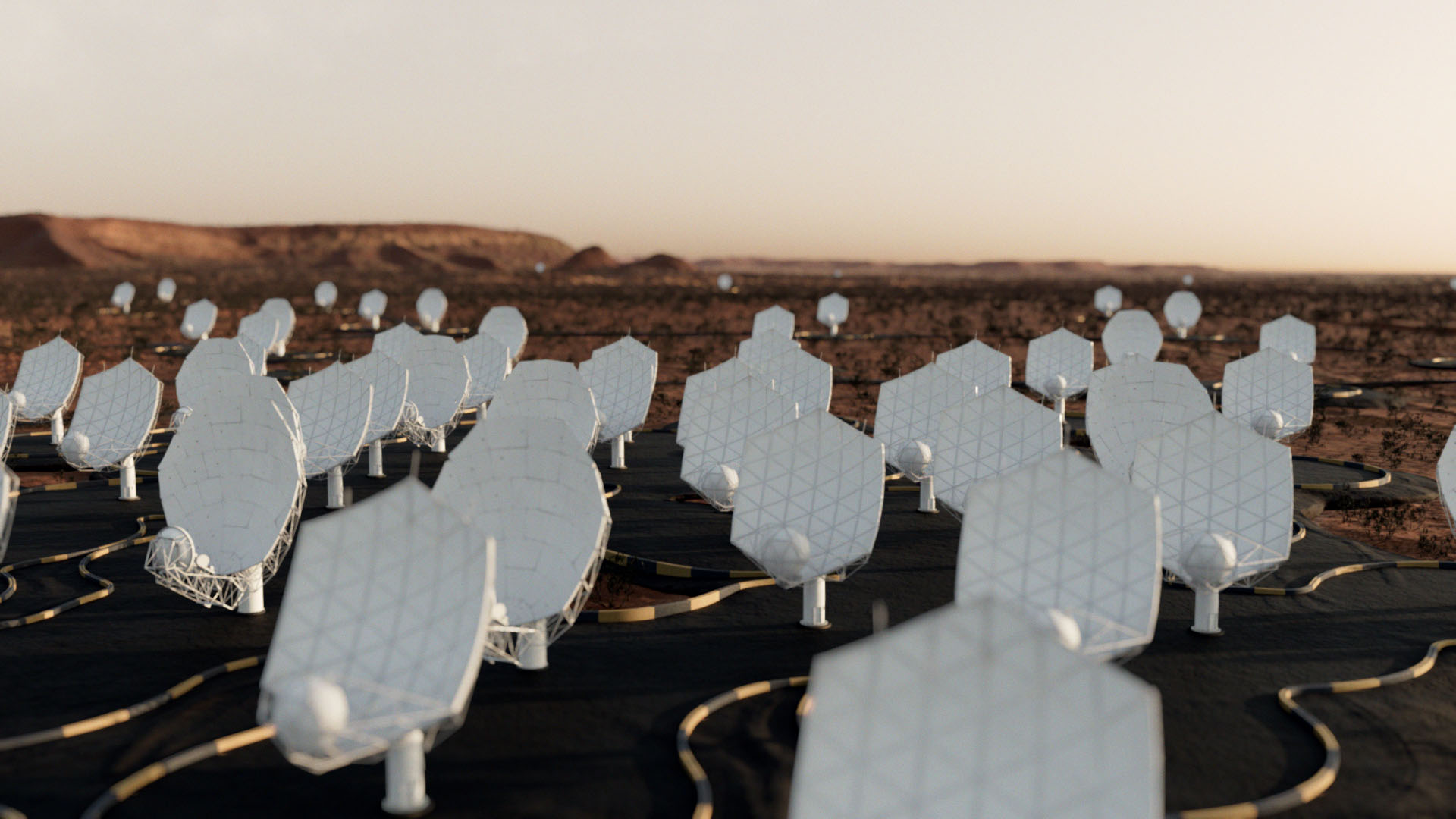
An animation of how the SKA-Mid would look when it is finished. (Animation: SKAO)
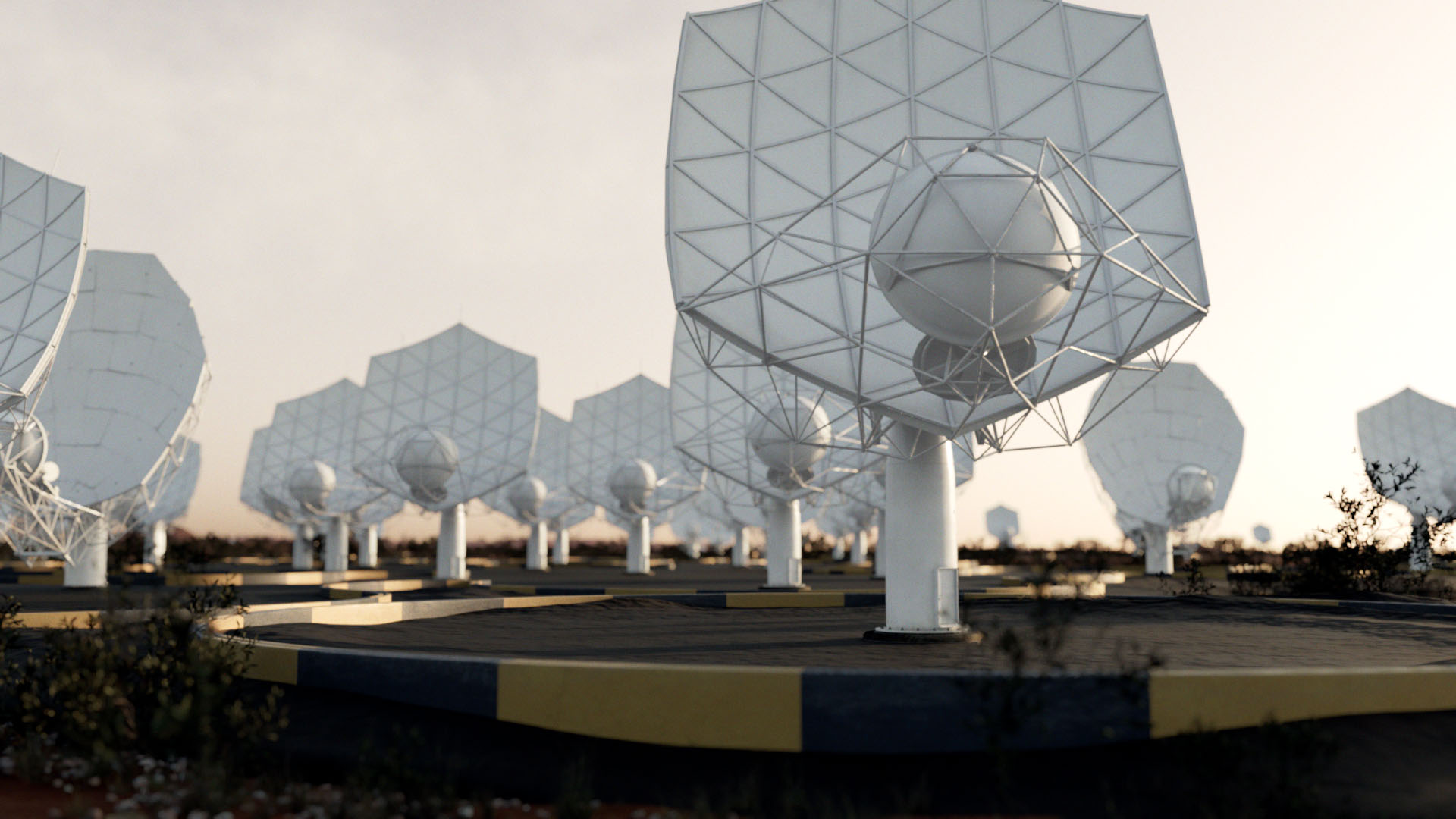
An animation of how the SKA-Mid would look when it is finished. (Animation: SKAO)
Professor Phil Diamond, director-general of the SKA Observatory (SKAO), the intergovernmental organisation established to bring all the 16 participating countries under one umbrella, says it was a long process. From securing the money, to ensuring each country’s parliamentary approval of the treaty, up to the completed design.
The SKA-Mid (which refers to the mid-frequency radio waves it can detect from the universe) will be built in South Africa, 90km outside Carnarvon in the Karoo. The MeerKAT precursor telescope, which has already produced quality science, is on this site along with high-end infrastructure which will be expanded. MeerKAT will eventually be part of the core of the SKA-Mid.
Dr Lindsay Magnus, telescope director of the SKAO in South Africa, explains that the MeerKAT design is much improved and the dishes have been enlarged from 13.5m to 15m. The SKA-Mid will consist of 197 dishes, including MeerKAT’s 64.
The area is huge: “The SKA-Mid will also have three spiral arms which will extend far out [from the core]. The greatest distance between two dishes will be 150km. MeerKAT will be in the core along with 80 more dishes, and then 53 more will complete the three spiral arms.”
There have been challenges not to interrupt the work of MeerKAT, including rolling blackouts. Huge diesel tanks are fuelling the science operations – less than a second after loss of power, the generator kicks in, burning through 300 litres an hour.
Of snakes and bees and very big dishes
The first four SKA dishes have already been manufactured in China and will arrive in South Africa early next year. It was announced on Monday that the Chinese company CETC54 had been selected to manufacture the SKA-Mid’s dishes.
Magnus says the first four dishes will be used for testing and qualification because the next will roll off the manufacturing line. “We want to make sure everything is correct before we build.” Once this is complete it will be shipped in containers to South Africa and assembled on-site.
Asked how this was decided, Dr Joe McMullin, SKAO deputy director-general and programme director, said: “The convention establishing the SKAO as an intergovernmental organisation committed the observatory to implement procurement on the principle of ‘fair work return’. Members will receive at least 70% fair work return on their contribution to the capital cost of SKA1 construction [current stage], excluding contingency; there will be a target of at least 70% fair work return on the contribution to the capital cost of construction inclusive of contingency.”
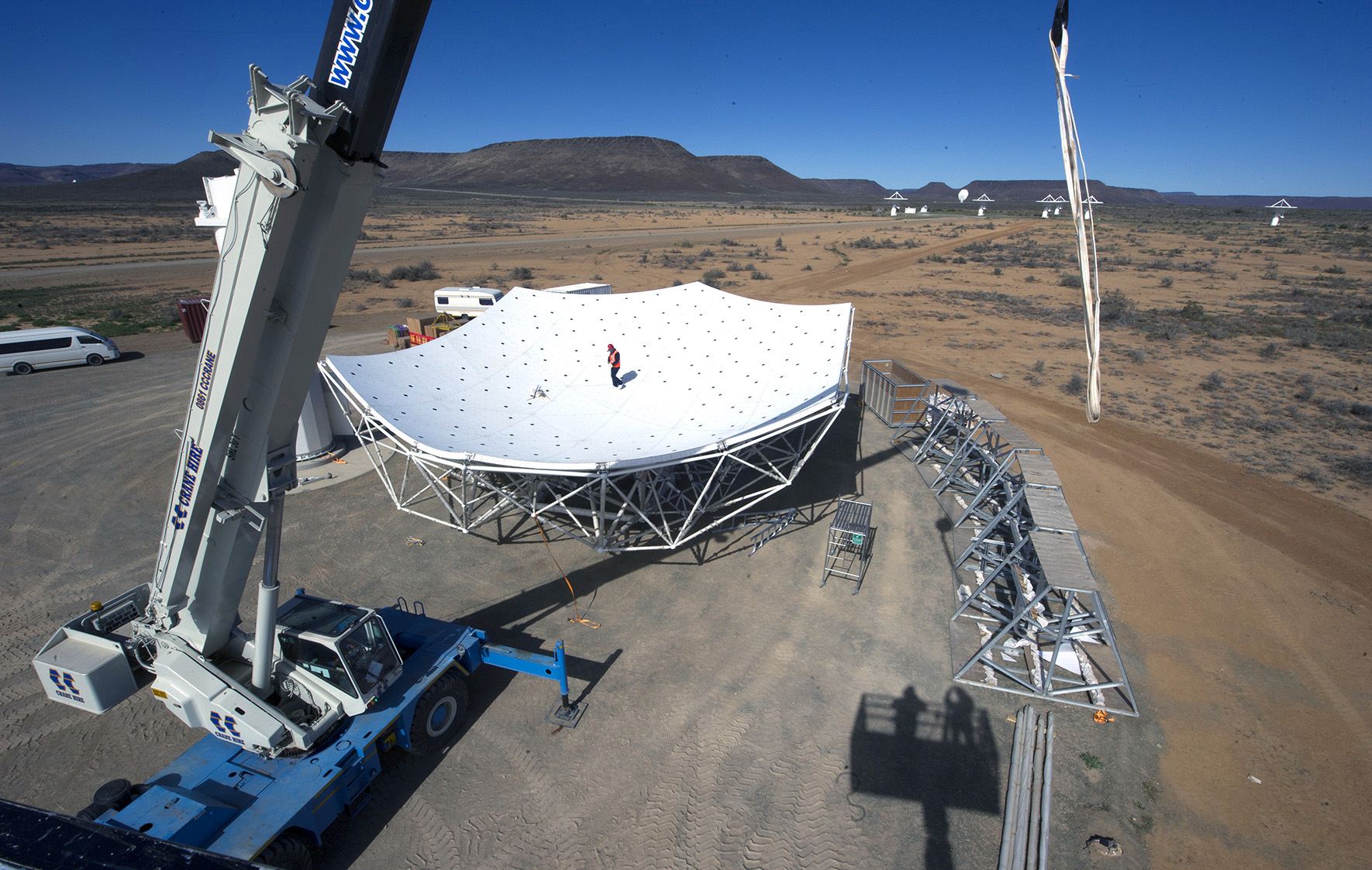
The construction a while back of the prototype Square Kilometre Array (SKA) dish shows the scale of the antennas. (Photo: SARAO)
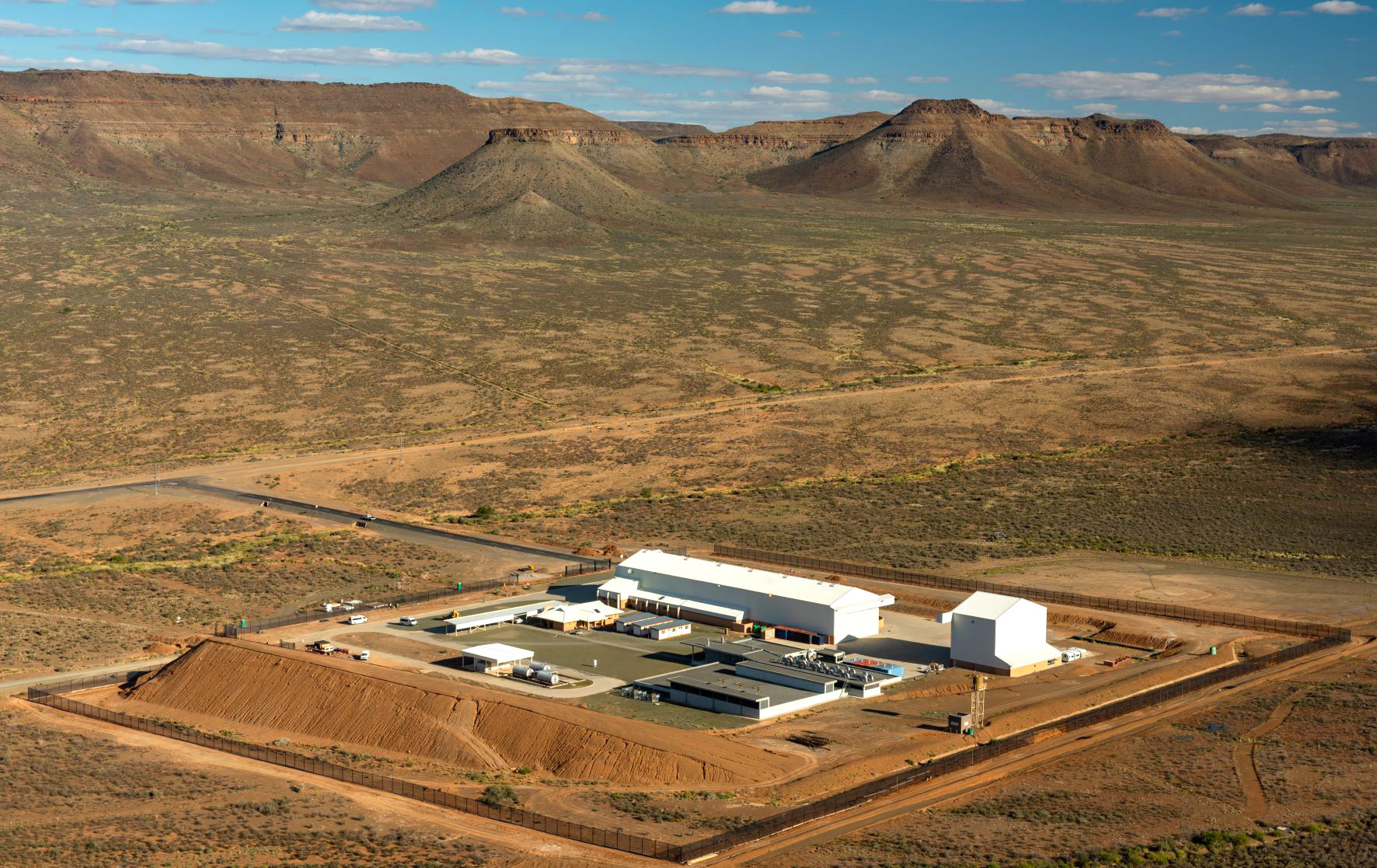
An arial view of the underground Karoo Array Processing Building (grey building) of MeerKAT and the Square Kilometre Array (SKA-Mid); the dish assembly shed (long white building) and the pedestal assembly shed (behind it). The mound to the left of the picture is manmade and helps to keep radio frequency interference out and so does the mountains. (Photo: SARAO)
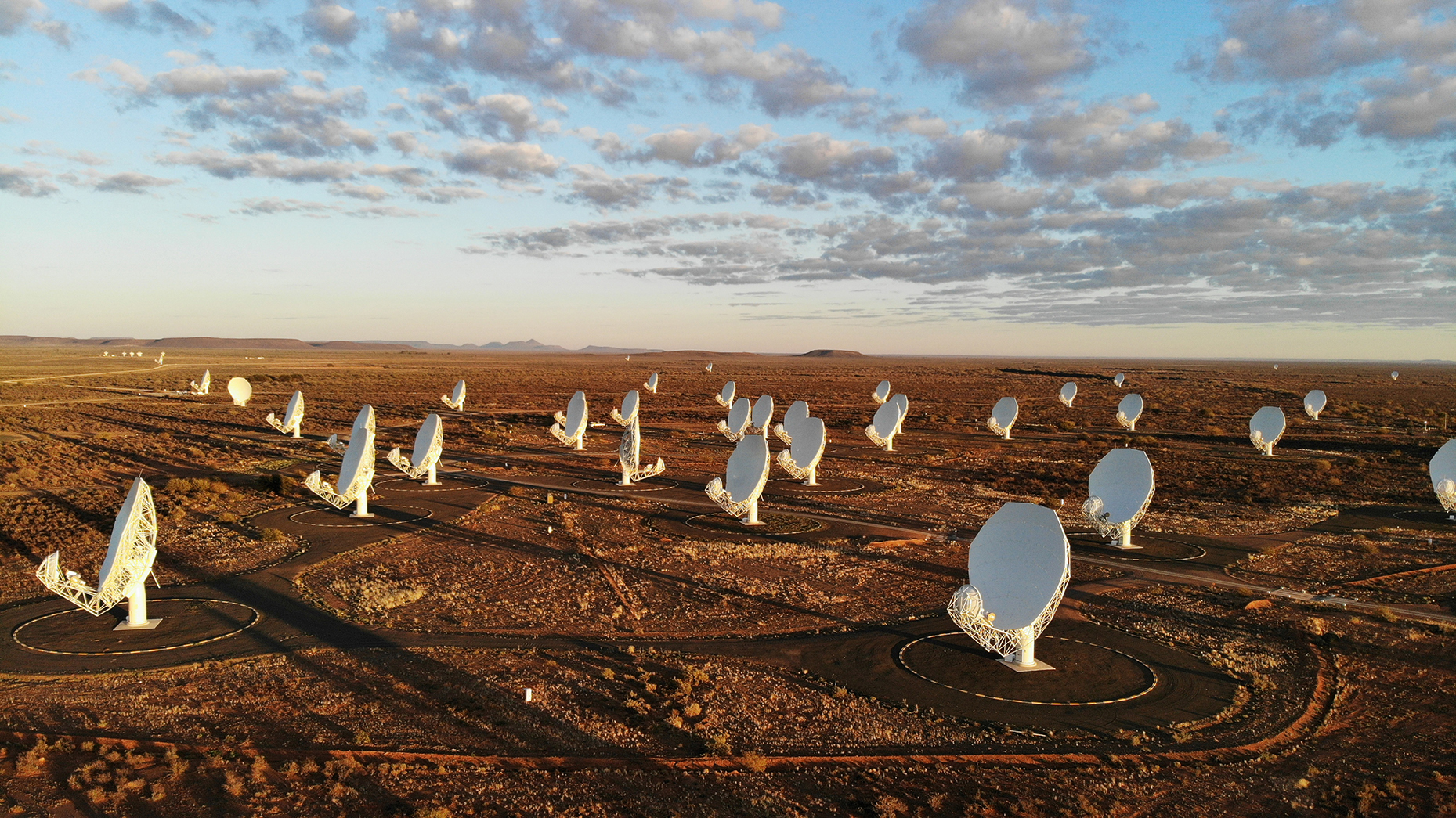
The core of MeerKAT which will eventually become part of the larger core of the Square Kilometre Array (SKA-MID). The official construction of the SKA was announced today. (Photo: SARAO)
Even though a lot of the infrastructure is already in place – including a massive underground signal processing centre, dish and pedestal assembly sheds, roads and an electrical substation – a lot more infrastructure is needed. Heading site construction in South Africa is Tracy Cheetham, who did the same for MeerKAT.
“We are the boots on the ground,” she said during a recent visit to the site when all the council members of participating countries were present. The plan is to supply overhead power for 30km to the spiral arms and then use solar power.
Contending with extremes in the weather, poisonous snakes, scorpions and even swarms of bees are part of Cheetham and the team’s day.
Read in Daily Maverick: “Why the SKA is as vital to space research as the James Webb Telescope”
The two SKA telescopes differ in design and are complementary by their nature. Both are interferometers: arrays of receptors (antennas) which when linked act as one enormous telescope.
The Australian SKA-low (low frequency) is built at Murchison in the western outback. It consists of 131,071 smaller dipole antennas at 517 stations.
While higher resolution makes images less blurry (like putting on reading glasses) the SKA telescopes’ exceptional sensitivity will allow them to see far deeper into the universe than current telescopes, revealing far fainter details than what has been observed before. They will also see more of the sky at once, providing vastly improved survey speeds, according to the SKAO.
The SKAO is also looking at the future, as a second, larger phase has been planned. SKA2 will be the largest scientific facility in the world, says Diamond, dwarfing all others to date. “I am often asked if this will happen. But let’s build SKA1 first and demonstrate the science as we promised. Then there will be a good chance that it will happen.
“MeetKAT is just a taste of the SKA’s ability. Our understanding of the universe will greatly improve with the SKA… And there is so much we still do not know,” said Diamond.
The science
The SKA has many scientific aims but here are some highlights. It will have the ability to observe the onset of the cosmic dawn and the epoch of re-ionisation. Using the faint radio light coming directly from the hydrogen itself. The resulting “movie” of the universe’s first 700 million years will answer a multitude of questions about this vital chapter in the history of the universe.
There is evidence that star formation was fundamentally different in the early universe, often occurring within intense concentrations of super star clusters that have few, if any, counterparts today.
Read in Daily Maverick: “Four ways to spot hints of alien life using the James Webb Space Telescope”
Cosmic magnetism has been an evasive issue. How, when and where did magnetism originate? The SKA will enable the creation of the first three-dimensional magnetic map of the universe. This will be done by measuring the individual magnetic components along the sightline towards extremely large samples of sources distributed in all directions in the sky and extending these measurements to sources at varying distances, according to the SKAO.
The telescopes will also make it possible, for the first time, to detect emissions from planets associated with nearby stars that are comparable to those generated by human activity on Earth. This will open the possibility of detecting technologically-active civilisations elsewhere in our galaxy.
But, wait, there is more
Radio frequency interference (RFI) at the site is taken very seriously. Everything is shielded, from the thick steel doors in the underground Karoo Array Processor Building where the first data arrives via optical fibre, to the vehicles which are allowed. No computer, cellphones or cameras (which have not been altered) may enter the site.
Even the scientists themselves are not on the site, they are in Cape Town, from where MeerKAT is digitally operated. A new Science Operations Centre will be built outside Cape Town, which will include telescope control and observation execution by the telescope operators. It will also house the Science Processing Centre, a high-performance computing centre with a powerful supercomputer.
The big data transfer rate from the SKA to the processing facility in Cape Town is about 20 terabits per second. This is about 1,000 times the equivalent data rate generated by the Atacama Large Millimeter/submillimeter Array (ALMA), the current state-of-the-art astronomy facility in the Chilean Andes, and 100,000 times faster than the global average home broadband speed for 2022.
To accommodate tourists and the curious, a brand-new visitor centre will be built in Carnarvon and will include a science tour to a lookout point from where people will be able to view the SKA’s core.
The site is part of the Meerkat National Park, the latest addition to the country’s parks. The manager, Hendrik Malgas, says their biggest task is to remove alien vegetation and reintroduce game. Several guided hiking tours are also planned for visitors.
Read in Daily Maverick: “Eavesdropping on the sky: The backstory of MeerKAT and SKA”
During the recent visit we stopped at Visserskloof, 15km from the main site, where a self-sufficient contractor’s camp is being built. Du Bruyn Jonker, the project manager, says they are preparing their own water treatment facility for both sewage and drinking water. There is housing for 250 people, as well as dining areas and recreational facilities.
A huge building with office space is ready. It will contain a radio frequency safe space where contractors will be able to use computers and the all-important Wi-Fi. “This is the only and last stop to make contact with the outside world,” he says.
“This is a challenging area to work in.”
There is not a single tree in sight. It is literally off the grid. Just like the radio astronomers want it. Silent. The telescope operators turn the dishes, slowly, all in unison, focused on one place in the infinite sky. Then they listen to the stars hundreds of light years away, where they will reveal their secrets to us. Or not. DM



















 Become an Insider
Become an Insider
Comments - Please login in order to comment.